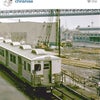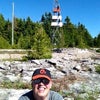The National Museum of Natural History is a natural history museum administered by the Smithsonian Institution, located on the National Mall in Washington, D.C., United States. Admission is free and the museum is open 364 days a year.
The museum's collections total over 126 million specimens of plants, animals, fossils, minerals, rocks, meteorites, and human cultural artifacts. It is the second most popular of all of the Smithsonian museums and is also home to about 185 professional natural history scientists — the largest group of scientists dedicated to the study of natural and cultural history in the world.
The museum opened its doors to the public on March 11, 1910 in order to provide the growing Smithsonian Institution with more space for collections and research. The building, which was not fully completed until 1911, was designed by Hornblower & Marshall. The building, designed in the neoclassical architectural style, was the first constructed on the north side of the National Mall, along Constitution Avenue, as part of the 1901 McMillan Commission plan. In 2000, Kenneth E. Behring donated $80 million to the museum and in 1997 donated $20 million to modernize it.
In addition to exhibits, the museum maintains vast reference collections and research facilities. See the online collections at collections.nmnh.si.edu
In 2005, The "Butterfly of Peace" gem was first displayed in the U.S. In 2008, an exhibit opened with 5,000 square feet (460 m2) dedicated to soil and its life-sustaining properties.
The National Gem and Mineral Collection is one of the most significant collections of its kind in the world. The collection includes some of the most famous pieces of gems and minerals including the Hope Diamond and the Star of Asia Sapphire, one of the largest sapphires in the world. There are currently over 15,000 individual gems in the collection, as well as 350,000 minerals and 300,000 samples of rock and ore specimens. Additionally, the Smithsonian's National Gem and Mineral Collection houses approximately 35,000 meteorites, which is considered to be one of the most comprehensive collections of its kind in the world. , the Old Post Office Building visible in the distance]]
The collection is displayed in the Janet Annenberg Hooker Hall of Geology, Gems and Minerals, one of the many galleries in the Museum of Natural History. Some of the most important donors are Washington A. Roebling, the man who built the Brooklyn Bridge, who gave 16,000 specimens to the collection, Frederick A. Canfield, who donated 9,000 specimens to the collection, and Dr. Isaac Lea, who donated the base of the museum’s collection of 1312 gems and minerals.
The museum announced the opening of the Hall of Human Origins, which is part of a $20.7 million exhibition by ongoing human origins research and education programs, which are all key components of the museum’s broader initiative, “Human Origins: What Does It Mean to Be Human?” It is "using the actual field sites where research is being conducted, a display of more than 75 skulls (cast reproductions) and an interactive human family tree showcasing 6 million years of evolutionary evidence from around the world."
The museum has over 570,000 catalogued reptiles from around the world. The National Collection of Amphibians and Reptiles has increased 200% over the past 40 years (190,000 specimen records in 1970 to over 570,000 specimen records in 2008). The Hall of Dinosaurs has fossilized skeletons and cast models, including Tyrannosaurus rex facing off with Triceratops, and the "Triceratops exhibit shows the first accurate dinosaur skeleton in virtual motion, achieved through the use of scanning and digital technology." The collection consists of 46 "complete and important specimens" of dinosaurs. The website has a "virtual tour" of the collection.
The museum has the largest collection of vertebrate specimens in the world, nearly twice the size of the next largest mammal collections, including historically important collections from the nineteenth and early twentieth centuries. Its collection was initiated by C. Hart Merriam and the U.S. Department of Agriculture (later the Department of Interior), which expanded it in the 1890s-1930s.
The O. Orkin Insect Zoo features live insects and exhibits about insects and entomologists. Different habitats have been created to show the type of insects that live in different environments and how they have adapted to a freshwater pond, house, mangrove swamp, desert, and rain forest. The zoo is sponsored by Orkin, a pest control company.
The Sant Ocean Hall opened on September 27, 2008, and is the largest renovation of the museum since it opened in 1910. The hall includes 674 marine specimens and models drawn from the over 80 million specimens in the museum's total collection, the largest in the world. The hall is named for the Roger Sant family, who donated $15 million to endow the new hall and other related programs.
The hall consists of 23,000 square feet of exhibition space and features a replica of a 45-foot-long North Atlantic Right Whale, a 1,500-gallon aquarium, a 24-foot-long female giant squid, an adult coelacanth, and a Basilosaurus.
This hall "examines the diversity, dynamism, and global influence of Africa's peoples and cultures over time in the realms of family, work, community, and the natural environment."
Featuring a live butterfly pavilion, this exhibit allows "visitors to observe the many ways in which butterflies and other animals have evolved, adapted, and diversified together with their plant partners over tens of millions of years."
"This hall explores some examples from various cultures in the western world including northern Iraq, ancient Egypt, Greece and Rome and the recent discovery of the Iceman, a Copper Age mummy found in an Italian glacier."
This exhibit displays a "variety of vertebrate skeletons grouped by their evolutionary relationships."
November 2, 2007 - November 2010
Using artifacts, rare photographs, and ephemera to explore the origins and religious practices of the movement in Jamaica, this exhibition takes viewers beyond the popular Jamaican music known as reggae to the deeper roots of the Rastafari culture. Video footage featuring first-person testimony from male and female Rastafari of different ages, nationalities, and racial and class backgrounds speak to Rastafari of unity and to the spread of the movement across the Caribbean and beyond over the past three decades.
July 19, 2008-January 3, 2010 Featuring the world of fungi, bacteria, worms, and other organisms, this exhibition draws connections between soils and everyday life.
February 7, 2009- February 6, 2011
This exhibition examines history through 17th-century bone biographies, including those of colonists teetering on the edge of survival at Jamestown, Virginia, and those of wealthy and well-established individuals of St. Mary’s City, Maryland.
May 30, 2009- October 10, 2009 This exhibition features large-format photographs of ants going about their daily business, a cast of an underground ant city, and a live ant colony.
The museum has an IMAX Theater for feature-length films, and the Discovery Room, a family- and student-friendly hands-on activity room on the first floor.
In the lower level there is a bird exhibit with all the migratory and native birds to Washington D.C.





